Magnificent And Massive Great Wall Of India – Astonishing Ancient Structure Shrouded In Secrecy
A. Sutherland - AncientPages.com - Most people have heard of the famous Great Wall of China, but not everyone knows that there is a magnificent ancient structure that is almost identical in India.
It is called the Great Wall of India, and it surrounds the ancient fort of Kumbhalgarh.
The Kumbhalgarh Fort is located in Rajastan in western India. This World Heritage Site was originally built in the 15th century by Rana Kumbha, ruler of Mewar, between 1433 and 1468 AD. The ancient fort was later enlarged in the 19th century.
According to legend, in 1443, Rana Kumbha, was initially repeatedly unsuccessful in attempts to build the fort wall. He sought the advice of a spiritual preceptor who was consulted about the construction problems. This spiritual being told the great ruler that a voluntary human sacrifice would solve whatever was causing the obstacle.
Additionally, the spiritual advisor advised building a temple where the head should fall and building the wall and the fort where the rest of his body lay. Needless to say, that no-one wanted to be sacrificed and there were no volunteers. One day, after quite some time, a pilgrim volunteered and was ritually decapitated.
Today the main gate of the fortress, Hanuman Pol, contains a shrine and a temple to commemorate the great sacrifice.
Kumbhalgarh Fort - Credit: Adobe Stock - Francesco
According to popular folklore, Maharana Kumbha used to burn massive lamps that consumed fifty kilograms of ghee and a hundred kilograms of cotton to provide light for the farmers who worked during the nights in the valley.
Surrounded by thirteen elevated mountain peaks, the wall extends over 36 kilometers around the perimeter of the fort and varies in width from 15 to 25 feet. It consists of thousands of beautiful stone bricks and decorations along the top.
During times of danger, the fort provided refuge for the rulers of Mewar.
The fort remained impregnable to direct assault and fell only once when a traitor poisoned the fort's internal water supply allowing the Mughal Emperor Akbar and forces from Delhi, Amer, Gujarat, and Marwar to penetrate its defense.
The massive wall at Kumbhalgarh took nearly a century to construct and made the fort virtually impregnable.
When you approach Kumbhalgarh you'll notice there are seven fortified gateways. Within the fort, there are over 360 ancient temples. Some of them are Jain and the rest Hindu. From the palace top, it is possible to see kilometers into the Aravalli Range. The sand dunes of the Thar desert can be seen from the fort walls. It is quite a magnificent view.
The Great Wall of India is the second-largest continuous wall on the planet. Yet, despite its magnificence, it is still little known to the outside world.
Written by – A. Sutherland - AncientPages.com Senior Staff Writer
Copyright © AncientPages.com All rights reserved. This material may not be published, broadcast, rewritten or redistributed in whole or part without the express written permission of AncientPages.com
More From Ancient Pages
-
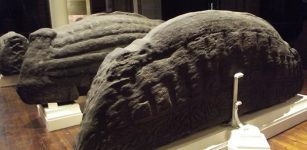 The Govan Stones – Treasures From The Viking Era In Britain
Featured Stories | Dec 27, 2015
The Govan Stones – Treasures From The Viking Era In Britain
Featured Stories | Dec 27, 2015 -
 Numa Pompilius – Remarkable Legendary Second King Of Ancient Rome Who Succeeded Romulus – Did He Ever Exist?
Featured Stories | Mar 2, 2018
Numa Pompilius – Remarkable Legendary Second King Of Ancient Rome Who Succeeded Romulus – Did He Ever Exist?
Featured Stories | Mar 2, 2018 -
 Ancient Copy Of Jesus’ Secret Teachings To His Brother James Discovered – First Apocalypse And Future Events Described
Artifacts | Dec 2, 2017
Ancient Copy Of Jesus’ Secret Teachings To His Brother James Discovered – First Apocalypse And Future Events Described
Artifacts | Dec 2, 2017 -
 Roman-Era Female Statue Dated Back To 1,800 Years Ago Unearthed In Anemurium, Türkiye
Archaeology | Nov 14, 2023
Roman-Era Female Statue Dated Back To 1,800 Years Ago Unearthed In Anemurium, Türkiye
Archaeology | Nov 14, 2023 -
 Mysterious Ancient Underground King And Ruler Of The World – Secret Science – Part 2
Civilizations | Jul 26, 2018
Mysterious Ancient Underground King And Ruler Of The World – Secret Science – Part 2
Civilizations | Jul 26, 2018 -
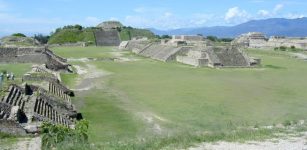 Ancient Mexican City Endured For Centuries Without Extremes In Wealth And Power
Archaeology | Mar 8, 2022
Ancient Mexican City Endured For Centuries Without Extremes In Wealth And Power
Archaeology | Mar 8, 2022 -
 Ötzi Had Dark Skin, Bald Head And Anatolian Ancestry- DNA Reveals
Evolution | Aug 16, 2023
Ötzi Had Dark Skin, Bald Head And Anatolian Ancestry- DNA Reveals
Evolution | Aug 16, 2023 -
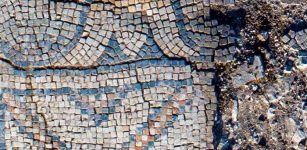 Beautiful Mosaics In 1,300-Year-Old Church Discovered In The Lower Galilee
Archaeology | Aug 29, 2020
Beautiful Mosaics In 1,300-Year-Old Church Discovered In The Lower Galilee
Archaeology | Aug 29, 2020 -
 Secrets Of The Two Half Crescent Moons And The Serpent People
Featured Stories | Jan 23, 2020
Secrets Of The Two Half Crescent Moons And The Serpent People
Featured Stories | Jan 23, 2020 -
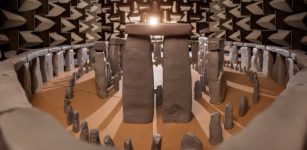 Ancient Sound Of Stones – Acoustics At Stonehenge Tested By Scientists
Ancient Technology | Aug 29, 2020
Ancient Sound Of Stones – Acoustics At Stonehenge Tested By Scientists
Ancient Technology | Aug 29, 2020 -
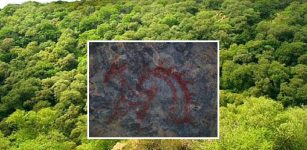 Haryana Caves In Mangar Bani Hide An Ancient Secret – Are These The Oldest Cave Paintings In India?
Archaeology | Jul 28, 2021
Haryana Caves In Mangar Bani Hide An Ancient Secret – Are These The Oldest Cave Paintings In India?
Archaeology | Jul 28, 2021 -
 Amazing World’s Largest Mosaic Piece Made By 13 Different Ancient Civilizations At Museum Hotel Antakya
Featured Stories | May 9, 2019
Amazing World’s Largest Mosaic Piece Made By 13 Different Ancient Civilizations At Museum Hotel Antakya
Featured Stories | May 9, 2019 -
 Cedar – Sacred Tree With Medicine Power In Native American Beliefs
Featured Stories | Jan 6, 2018
Cedar – Sacred Tree With Medicine Power In Native American Beliefs
Featured Stories | Jan 6, 2018 -
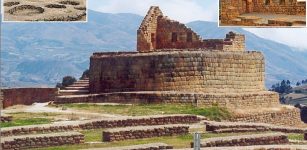 Ancient Ingapirca: Largest And Best Preserved Inca Ruins In Ecuador
Civilizations | Dec 9, 2016
Ancient Ingapirca: Largest And Best Preserved Inca Ruins In Ecuador
Civilizations | Dec 9, 2016 -
 Mysterious Sumerian Star Tablet And Strange Divine Omens – Sacred Knowledge Of The Gods – Part 1
Featured Stories | Feb 14, 2021
Mysterious Sumerian Star Tablet And Strange Divine Omens – Sacred Knowledge Of The Gods – Part 1
Featured Stories | Feb 14, 2021 -
 Oseberg Ship: Amazingly Well-Preserved Viking Burial Ship
Featured Stories | Jun 15, 2016
Oseberg Ship: Amazingly Well-Preserved Viking Burial Ship
Featured Stories | Jun 15, 2016 -
 Tailteann Games: Ancient Irish Version Of The Olympic Games
Ancient History Facts | May 15, 2016
Tailteann Games: Ancient Irish Version Of The Olympic Games
Ancient History Facts | May 15, 2016 -
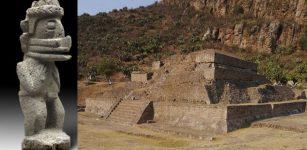 Who Built The Mysterious Huapalcalco Pyramid – Mexico’s Smallest Pyramid?
Featured Stories | Mar 29, 2018
Who Built The Mysterious Huapalcalco Pyramid – Mexico’s Smallest Pyramid?
Featured Stories | Mar 29, 2018 -
 Ancient Flying Canoes And Magic In The Pacific – Arrival Of Strange People – Part 1
Featured Stories | Jan 28, 2020
Ancient Flying Canoes And Magic In The Pacific – Arrival Of Strange People – Part 1
Featured Stories | Jan 28, 2020 -
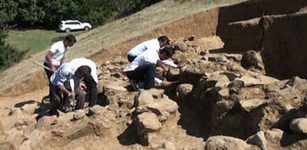 New Findings In Ancient Palidli Necropolis, Agdam Azerbaijan
Civilizations | Sep 24, 2015
New Findings In Ancient Palidli Necropolis, Agdam Azerbaijan
Civilizations | Sep 24, 2015






